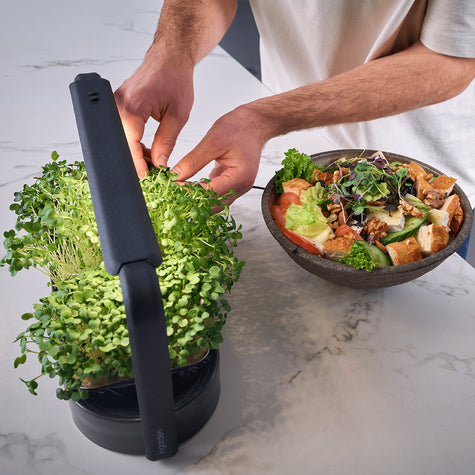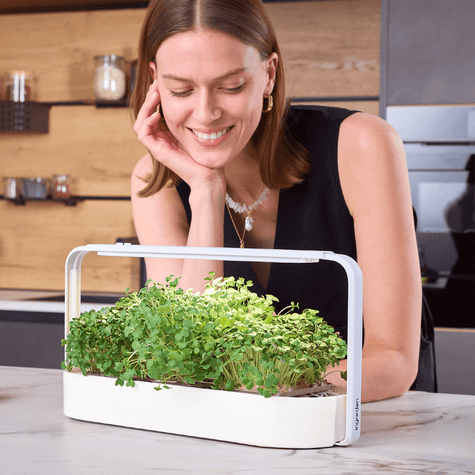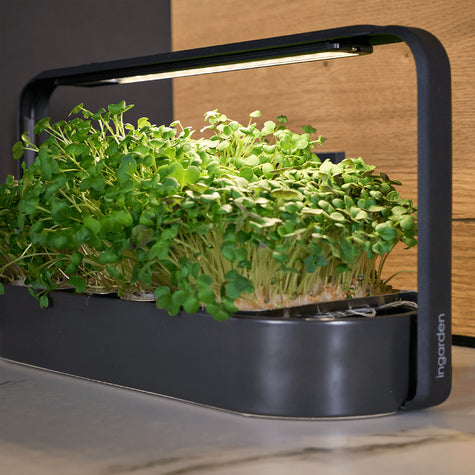Want to improve your diet? At ingarden, healthy eating is at the heart of everything we do. We're dedicated to making everyone's lives more nutritious by harvesting the goodness of microgreens. We've created a special section on our blog to share our latest nutrition tips with you. This post explains why you need chlorophyll in your diet.
What is chlorophyll?
Chlorophyll is the name for the pigment that makes plants (and microgreens!) green. The greener a plant is, the more chlorophyll it contains. Plants need chlorophyll to obtain food and nutrients through photosynthesis. Photosynthesis is the process by which plants convert light energy into chemical energy that enables growth. Photosynthesis requires chlorophyll, water, carbon dioxide, and sunlight.
Three reasons why you need chlorophyll (ABC)
Antioxidants: Vitamin C, vitamin K, and chlorophyll all have something in common: they are rich in antioxidants! Antioxidants are good for our bodies because they help prevent or slow down damage to our cells that can be caused by harmful molecules. This means the body is less susceptible to disease. Green foods like spinach and kale are rich in antioxidants and chlorophyll.
Blood formation: Another benefit of chlorophyll, invisible to the naked eye, is its blood-forming properties. Due to its protein-like chemical structure, researchers believe that chlorophyll improves the quality of red blood cells. We need red blood cells to transport oxygen throughout the body. The better the quality of the red blood cells, the lower the likelihood of blood clots and blood disorders.
Protection against cancer: Studies have shown that rodents given chlorophyll were less likely to develop tumors. This is because chlorophyll prevents the body from absorbing carcinogenic substances. Although human trials are still in their early stages, most scientists agree that a diet rich in green vegetables, which contain a lot of chlorophyll, may protect against cancer.
How can I get more chlorophyll into my diet?
Chlorophyll supplements are very popular because of their health benefits. However, instead of taking chlorophyll supplements, which may contain additional fillers and side effects, we recommend getting more chlorophyll in your diet through fresh, whole, green plants – and microgreens!
Look for the greenest vegetables you can find, because the greener the plant, the higher its chlorophyll content. If you're growing at home in your garden, we recommend our arugula and kale microgreens due to their high chlorophyll content. If you're shopping at the supermarket, choose peas, spinach, Swiss chard, and leeks.







